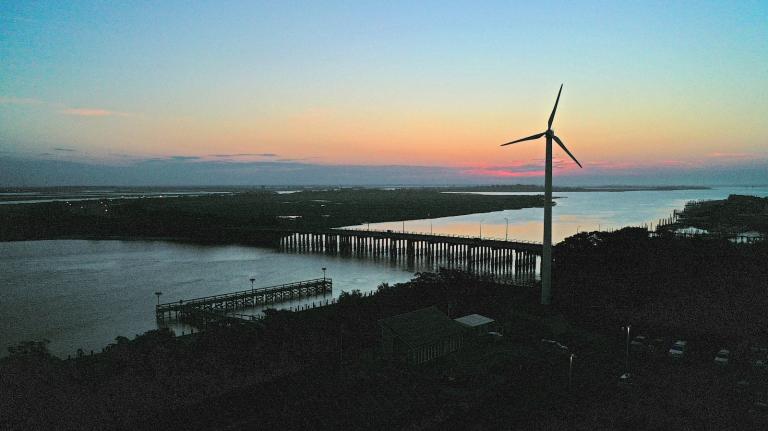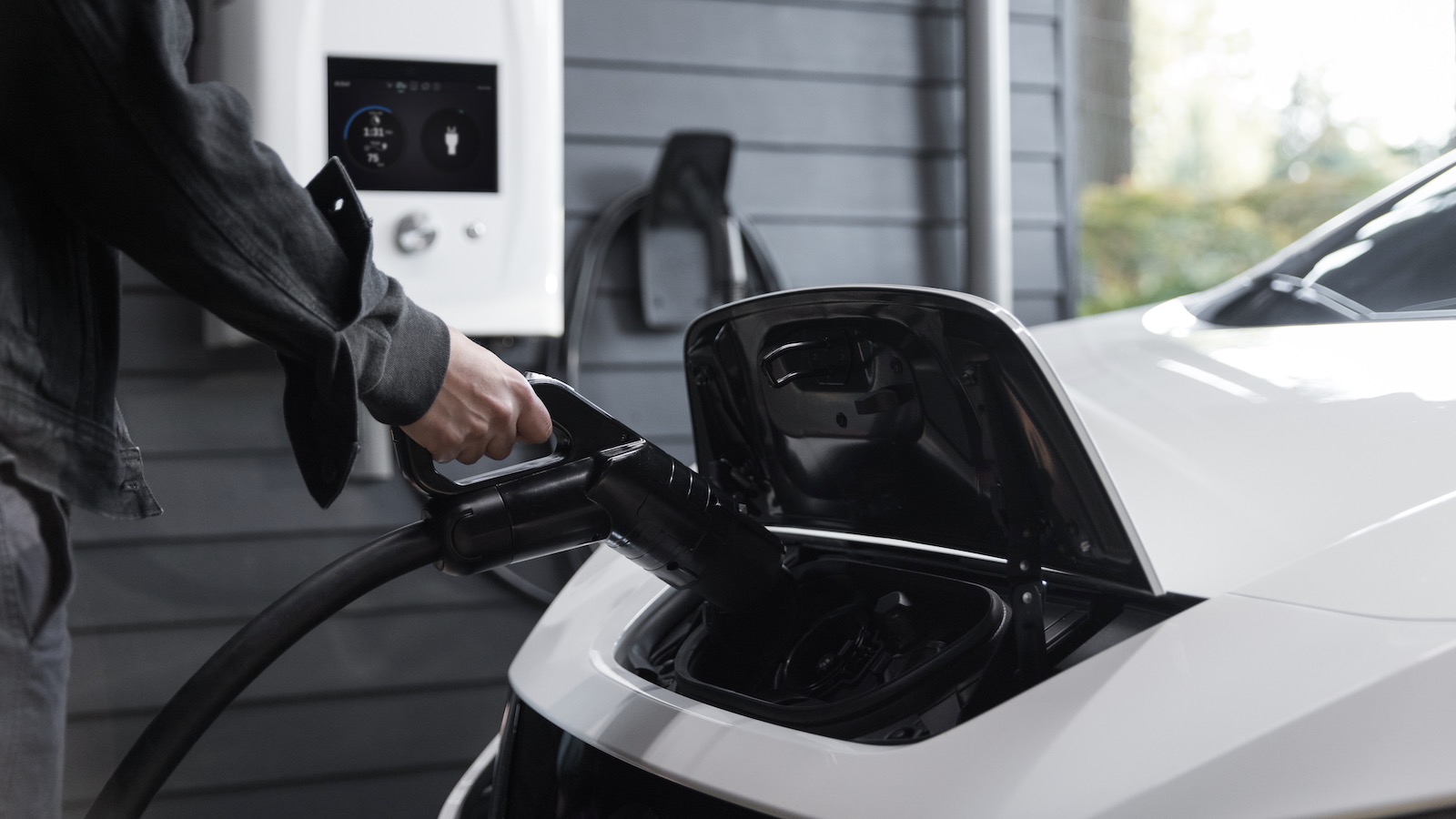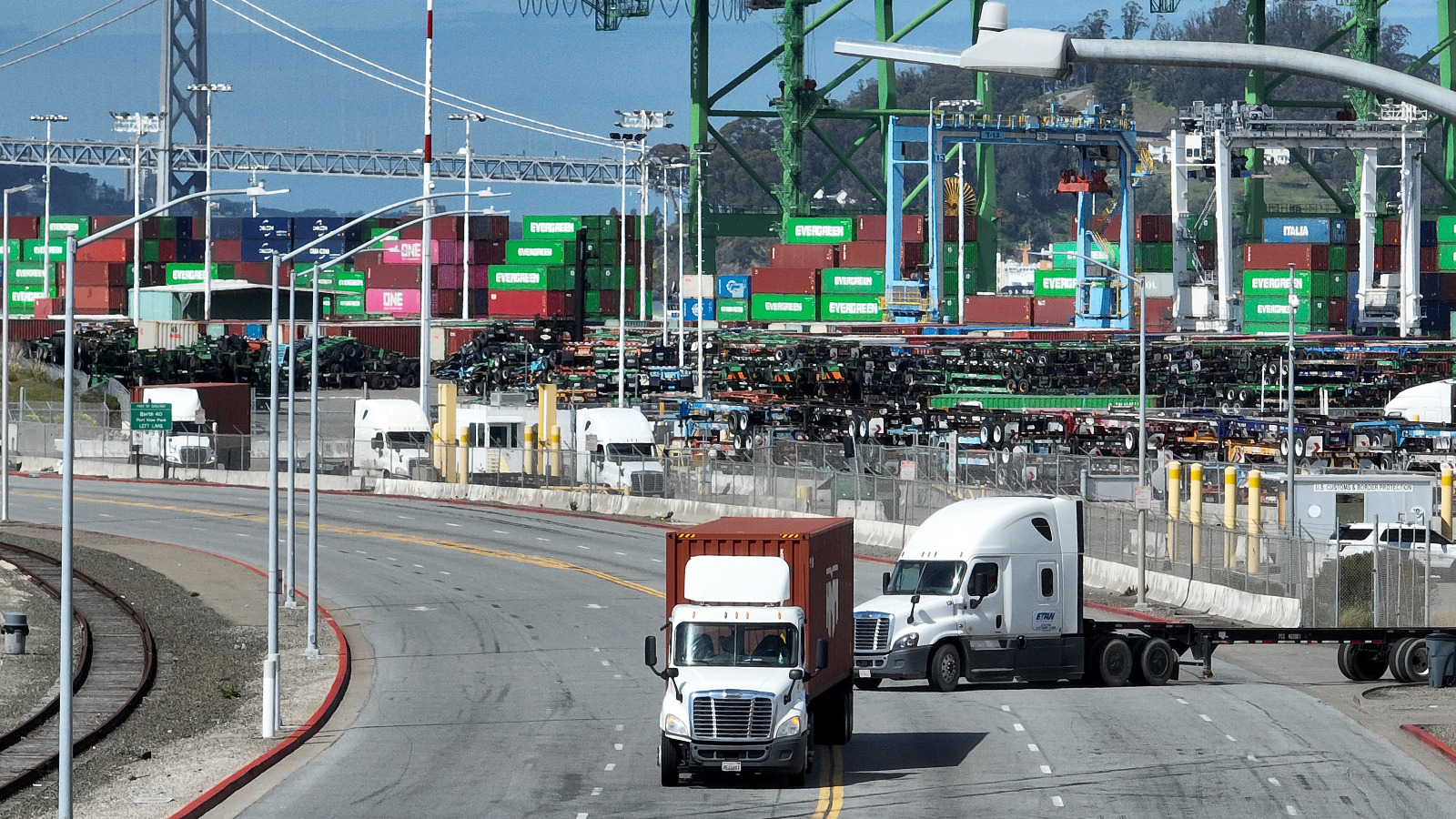Chris Bowe was preparing for his daughter’s ninth birthday party in February when a drenching storm knocked out power to his neighborhood in Hayward, California. Minutes before the party began, Bowe connected his electric Ford F-150 Lightning to a panel in his garage, sending electricity from the pickup truck to his house.
“It was dark out, parents were dropping off their kids, and our house was lit up,” said Bowe, who works as a FedEx manager in the Bay Area. “They were like, ‘How do you have power?’”
Bowe kept the lights on using bidirectional charging, which allows electric vehicles to not only receive electricity but discharge it as well. It’s a feature that a proposed California bill would require that all EVs sold in the state offer by model year 2027.
Making an EV bidirectional capable is a matter of equipping it with the right software and hardware, and some, like the Nissan Leaf, Kia EV 6, and the Lightning, already provide the feature. Other manufacturers have been slower to roll out the technology. Tesla, for example, says its cars will be bidirectional by 2025.
Proponents of Senate Bill 233, which the state’s Senate Appropriations Committee will hear this month, say using electric vehicle batteries to power homes, buildings, and even the grid could provide energy resilience and bolster grid reliability. Climate events and growing power demand increasingly stress the state’s energy supplies. Utilities sometimes shut down power lines to prevent ignition when wildfire danger is high. Storms can cause widespread blackouts, and excess demand when people turn up air conditioners during heat waves have prompted rolling blackouts to ration power.
The solutions to these outages often rely on fossil fuels that only exacerbate the underlying causes. California might turn on a backup natural gas plant to supply more power, and homes and businesses often draw power from diesel generators during blackouts.
“When the grid is stressed, wouldn’t it be great if instead of firing polluting fossil fuel peaker plants typically located in disadvantaged communities, we were using our electric vehicles?” said Kurt Johnson, community energy resilience director at the California nonprofit The Climate Center.
Such a solution is called vehicle-to-grid integration, in which EV owners could plug their cars into bidirectional charging stations at home and sell the power in its battery to utilities during peak demand, buttressing the grid and reducing their utility bills. Those batteries can also power a home or building, or even be used to directly plug in a refrigerator or essential medical equipment.
“Even the smallest commonly available EV battery is a multiday energy storage asset for everybody,” said Johnson. “A Nissan Leaf can run your house for days.”
The bill comes as the state takes a leading role in vehicle electrification. Last year, California regulators required that all new cars sold in the state be electric by 2035, and it already has 1.5 million EVs on the road. That number is projected to reach 8 million by 2030. All of those cars would have a total capacity of 80 gigawatts of power, according to Johnson. Plugging in a fraction of them would quickly surpass the capacity of the state’s largest power plant, the Diablo Canyon nuclear plant, which can provide up to 2.3 gigawatts.
The Alliance for Automotive Innovation, an auto-industry advocacy group, opposes the bill. Its representatives declined an interview request, but referred Grist to a letter to state senators in which it said that a mandate is premature and does not consider the associated costs or the regulatory changes needed to make vehicle-to-grid technology work.
“Mandating bidirectional hardware on the vehicle will not ensure that bidirectional charging will take place or will even be capable of taking place,” it said in the letter. The organization estimates that the technology could add about $3,300 to a vehicle’s cost.
In a Senate Transportation Committee hearing last week, state Senator Nancy Skinner said the mandate would ensure that vehicles sold in the most pivotal years of the state’s electric transition, which is being driven by generous grants and rebates, can become energy assets. “I appreciate that manufacturers don’t like mandates, but we need to make sure the cars have the capability while the rebates still exist,” said Skinner, who introduced the bill.
The alliance also argued that using an EV to deliver power could adversely impact battery life and undermine battery warranties, which are based on years and mileage. However, the battery warranty on the Nissan Leaf, one of the least expensive full-battery electric cars available, accounts for bidirectional charging use. The bidirectional charger approved for use with the Leaf manages the battery’s levels to preserve battery life.
Even if every EV had bidirectional capability, getting the energy flowing into a home or the grid requires an expensive array of hardware. In addition to a bidirectional charging station, the car owner would need an inverter to convert the car’s DC power to AC, a switch to isolate the system from the grid, and a small battery to get the system going during an outage. Ford offers an all-in-one package that costs more than $5,000, not including the cost of hiring an electrician to install it.
That was too expensive for Bowe. “It sounds wonderful, but you’re still talking about an upper-middle-class, wealthy person in a single-family home that’s going to be able to afford to do this,” he said. He instead installed a manual transfer switch that he connects to his Lightning with the same type of power cord used for a home generator. It cost him $1,500.
For those who can afford all the hardware, the framework for connecting with the grid and selling electricity back to the local utility does not yet exist. “We’re not even effectively interconnecting stationary batteries, much less mobile batteries,” said Johnson. Also, for it to make financial sense for EV owners to offer up energy to the grid, there needs to be pricing mechanisms for selling the electricity to the utility. While a few California utilities have begun vehicle-to-grid pilot projects, no official programs exist yet.
Johnson said the state is working on both interconnection and pricing –– there are about a dozen bills addressing interconnection woes in the legislature, and the public utilities commission is studying new pricing frameworks. He said that SB 233 is meant to be a starting point. “If the vehicles themselves don’t have the bidirectional capacity, which is the point of the bill, then none of that opportunity can be realized. So it all starts with the vehicles.”




